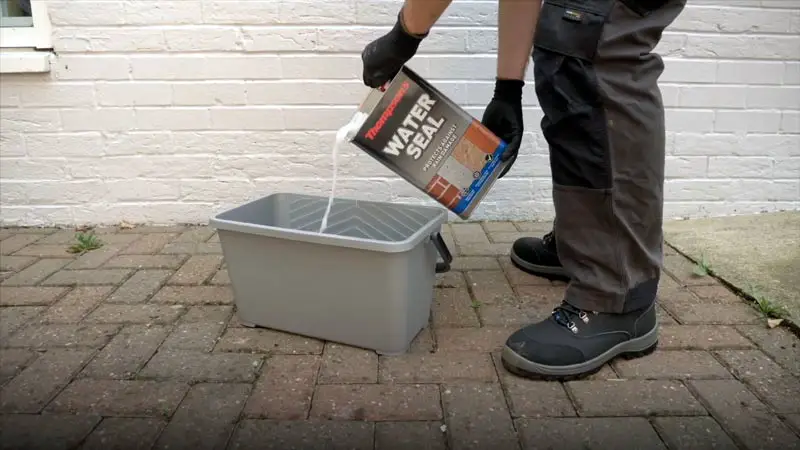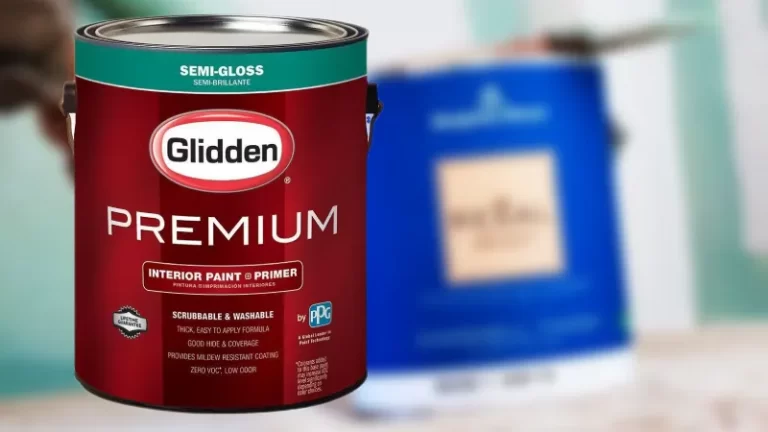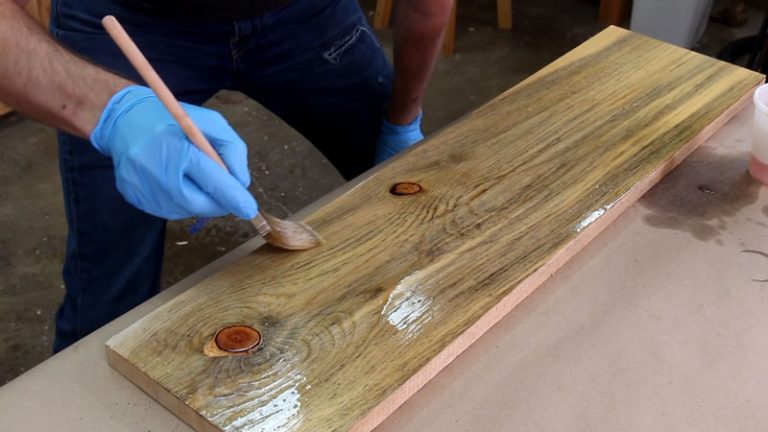What Happens if Thompson Water Seal Freezes?

Thompson’s Water Seal is a product that is used to protect the wood from water damage. It is a clear sealant that is applied to the surface of the wood, where it penetrates the wood to create a barrier against water and moisture.
This helps to prevent rot, decay, and other damage caused by water exposure. Thompson’s Water Seal is commonly used on decks, fences, and other outdoor wooden structures, and it is an effective way to protect the wood and extend its lifespan.
However, the product can freeze if exposed to cold temperatures, which can affect its effectiveness. In this article, we will discuss what happens when Thompson’s Water Seal freezes and whether it is safe to use frozen Thompson’s Water Seal.
You'll Learn About
What is Thompson Water Seal and Why It is Used?
- Thompson Water Seal is a product used to protect the wood from water damage. It is a clear sealant that is applied to the surface of wood. The sealant penetrates the wood to create a barrier against water and moisture, which helps to prevent rot, decay, and other damage caused by water exposure.
- Thompson Water Seal is made up of a blend of water, organic solvents, and waxes or polymers. The water and solvents help the sealant to penetrate the wood, while the waxes or polymers provide a protective coating on the surface of the wood.
- The sealant is applied using a brush, roller, or sprayer. It is important to apply the sealant evenly and according to the manufacturer’s instructions to ensure that it provides adequate protection.
- After the sealant has been applied, it typically takes several hours or days to dry and cure. During this time, it is important to keep the area free of water and other contaminants to ensure that the sealant adheres properly to the wood.
- Thompson Water Seal is commonly used on decks, fences, and other outdoor wooden structures. It can also be used on other types of wood, such as siding, log homes, and wood trim. It is an effective way to protect wood from water damage and extend its lifespan.
How Does Thompson’s Water Seal Freeze? What Can Happen if Freezes?
Thompson’s Water Seal is a liquid product that is applied to the surface of wood to protect it from water damage. Like many other liquid products, it can freeze if it is exposed to cold temperatures.
Here’s how it freezes:
- When a liquid freezes, the water molecules within it slow down and become more organized, forming a solid crystal structure. This can cause the liquid to thicken and become less fluid, making it difficult to apply evenly to the wood.
- In the case of Thompson’s Water Seal, freezing can cause the various ingredients within the sealant to separate and form distinct layers. This can make the sealant less effective at protecting the wood, as it may not be able to penetrate the wood properly or form a continuous protective coating on the surface.
- If the sealant has already been applied to the wood and then freezes, it may not adhere properly to the surface of the wood. This can result in the sealant flaking, peeling, or cracking, which can compromise its effectiveness at protecting the wood.
- Additionally, freezing can cause the sealant to become brittle and more susceptible to damage from impact or abrasion. This can make it more likely that the sealant will be damaged or removed, leaving the wood vulnerable to water damage.
- In general, it is not recommended to use frozen Thompson’s Water Seal, as it may not provide adequate protection for the wood. It is best to replace the frozen product with a fresh one and apply it according to the manufacturer’s instructions.
Should You Use It When It Freezes?
There are some condition if you can use it when it is freezes:
- Thompson’s Water Seal is a product used to protect wood from water damage. It is typically applied as a liquid, but it can freeze if it is exposed to cold temperatures.
- Using frozen Thompson’s Water Seal may result in inadequate protection for the wood. When the sealant freezes, the various ingredients within it can separate and form distinct layers. This can make the sealant less effective at penetrating the wood and forming a continuous protective coating on the surface.
- Additionally, freezing can cause the sealant to become brittle and more susceptible to damage from impact or abrasion. This can make it more likely that the sealant will be damaged or removed, leaving the wood vulnerable to water damage.
It is not recommended to use frozen Thompson’s Water Seal, as it may not provide adequate protection for the wood. It is best to replace the frozen product with a fresh one and apply it according to the manufacturer’s instructions.
Does Thompson’s Water Seal Go Bad?
Thompson’s water seal does not go bad in the sense that it will spoil or rot like food does. However, it can become ineffective over time if it is not stored or used properly.
One of the main factors that can affect the effectiveness of Thompson’s water seal is exposure to extreme temperatures. As mentioned earlier, freezing temperatures can cause the sealant to thicken and separate, making it difficult to apply properly and potentially reducing its effectiveness at protecting the wood.
Similarly, exposing the sealant to high temperatures, such as leaving it in a hot car or storing it in a location with high ambient temperatures, can cause the ingredients within the sealant to break down and become less effective.
In general, it is important to store Thompson’s water seal in a cool, dry place, and to use it within a reasonable timeframe. If you are unsure about the condition of the sealant or whether it is still effective, it is best to replace it with a fresh product.
How Do I Know if My Thompson Water Seal is Bad?
- Determine if the surface to be treated with Thompson’s Water Seal is porous and ready for application.
- Perform the splash test by sprinkling water on various sections of the surface.
- Observe the reaction of the water on the surface.
- If the water absorbs and darkens the color of the surface within five seconds, the surface is porous and ready to be treated.
- If the water beads up or otherwise sits on top of the surface, the surface does not need protection at this time.
- If the surface is ready to be treated, proceed with applying Thompson’s Water Seal according to the manufacturer’s instructions.
- If the surface is not ready to be treated, consider other methods of protecting the wood from water damage.
Alternative to Thompson Water Seal
Rainguard Premium Wood Sealer
Rainguard Premium Wood Sealer is a water-based sealer that is formulated with a blend of silane and siloxane. This allows it to penetrate the wood and create a protective barrier against water and moisture. It dries to an almost invisible finish, which does not create a slippery surface like some other sealants.
Defy Crystal Clear Sealer
DEFY Crystal Clear Sealer is designed specifically for use on composite lumber, which can be difficult to seal due to its mixed material composition. The sealer contains special ingredients that protect the wood from mold, mildew, and algae stains.
Anchorseal 2
Anchorseal 2 is a plant-based wood sealer that is formulated with a blend of polymers and wax. It is particularly well-suited for use on exotic hardwoods, but it can also be used on green logs and lumbers to prevent checking and splitting.
Roxil Wood Protection Cream
Roxil Wood Protection Cream is a semi-silicon based wood sealer that penetrates the wood and leaves an invisible finish. It is easy to apply and provides long-lasting protection against water and moisture.
Eco-advance Exterior Wood Waterproofer
Eco-Advance Exterior Wood Waterproofer is a spray-on wood sealer that is safe to use around people, plants, and animals. It has a milder odor than many other wood sealers, making it a good choice for those who are sensitive to strong smells.
Ready Seal Stain and Sealer
Ready Seal Stain and Sealer for Wood combines wood stain and sealer in one product, making it an economical choice for those who want to both protect and enhance the appearance of their wood. The product does not require a primer, making it easy to apply.
Pure Tung Oil Natural Wood Sealer
Pure Tung Oil Natural Wood Sealer is an all-natural wood sealer that is derived from the tung tree. It has been used for centuries to preserve and enhance the appearance of wood, and it provides long-lasting protection against water and moisture.
In general, these alternative wood sealers are effective at protecting wood from water damage and extending its lifespan. They each have their own unique features and benefits, so it is worth considering them as possible alternatives to Thompson’s Water Seal.
Frequently Asked Questions
Can Thompson’s Water Seal Freeze?
Yes, Thompson’s Water Seal can freeze if it is exposed to cold temperatures. When a liquid freezes, the water molecules within it slow down and become more organized, forming a solid crystal structure. This can cause the liquid to thicken and become less fluid, making it difficult to apply evenly to the wood.
What Happens if Thompson’s Water Seal Freezes?
If Thompson’s Water Seal freezes, it can become ineffective. Freezing can cause the various ingredients within the sealant to separate and form distinct layers. This can make the sealant less effective at penetrating the wood and forming a continuous protective coating on the surface.
Additionally, freezing can cause the sealant to become brittle and more susceptible to damage from impact or abrasion.
Is It Safe to Use Frozen Thompson’s Water Seal?
It is not recommended to use frozen Thompson’s Water Seal, as it may not provide adequate protection for the wood. Using frozen Thompson’s Water Seal may result in inadequate protection for the wood, as the sealant may not be able to penetrate the wood properly or form a continuous protective coating on the surface.
Additionally, freezing can cause the sealant to become brittle and more susceptible to damage, which can compromise its effectiveness at protecting the wood. It is best to replace the frozen product with a fresh one and apply it according to the manufacturer’s instructions.
Final Words
Thompson’s Water Seal is a product that is used to protect wood from water damage. It is a clear sealant that is applied to the surface of the wood, where it penetrates the wood to create a barrier against water and moisture.
However, if the product freezes, it can become ineffective. Freezing can cause the product to thicken and separate, making it difficult to apply properly and potentially reducing its effectiveness at protecting the wood.
It is not recommended to use frozen Thompson’s Water Seal, as it may not provide adequate protection for the wood. It is best to replace the frozen product with a fresh one and apply it according to the manufacturer’s instructions.




